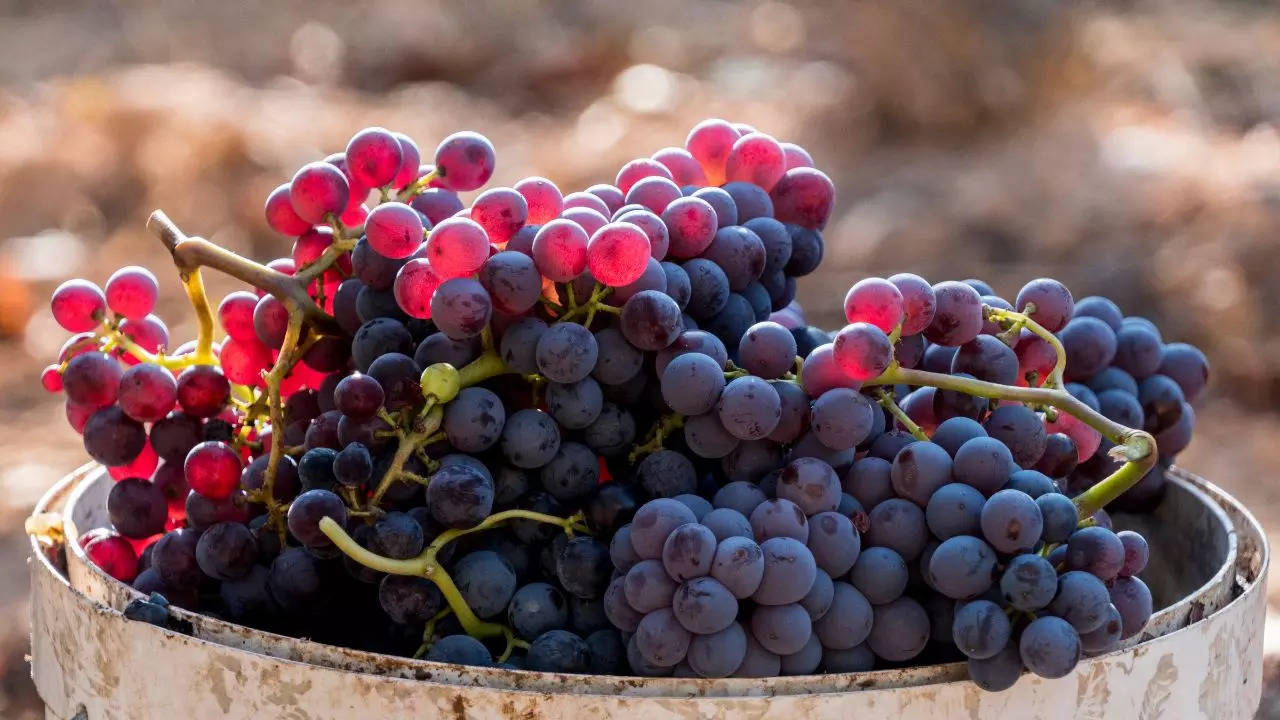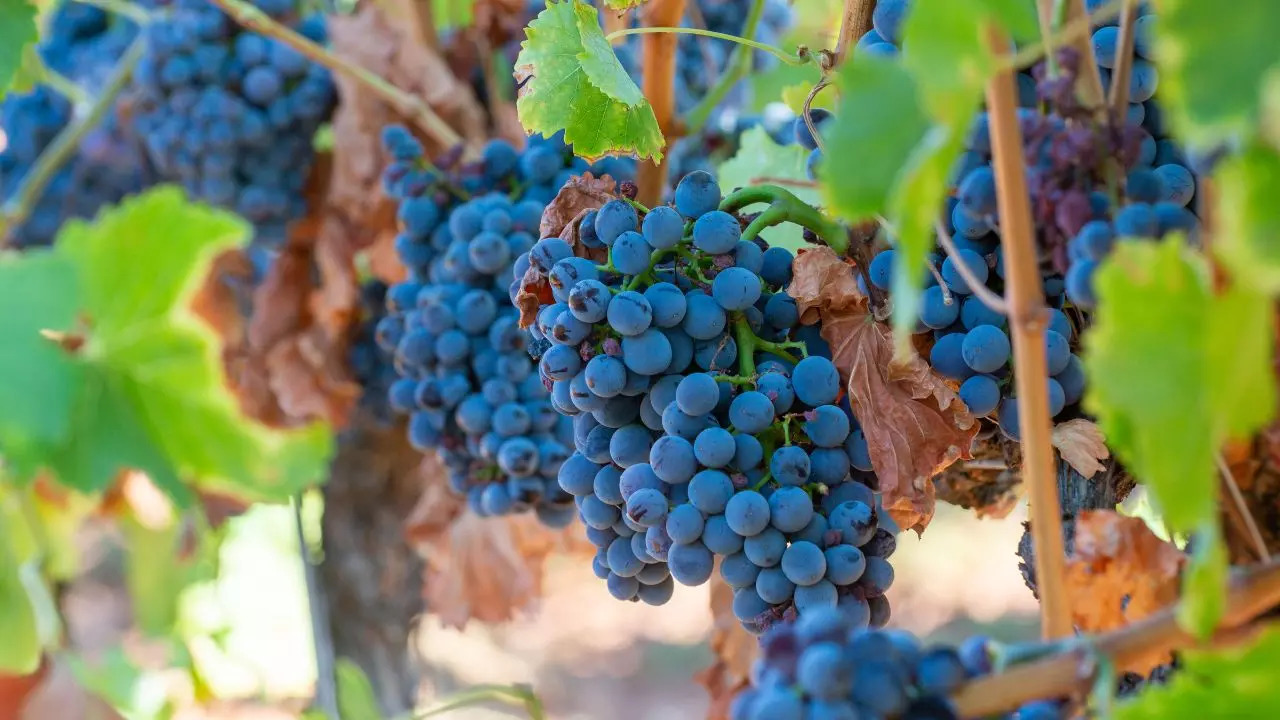International Grenache Day
Every year, on the third Friday of September, the world celebrates International Grenache Day To recognise this grape variety’s contribution to making delicious wines, in 2024 the occasion will be celebrated on 20 September, so let’s find out why this grape variety is so adored and what its importance is in making your favourite wine.
Garnacha, also known as Grenache in Spain, is a versatile and highly prized grape variety that has earned its place in vineyards around the world. Its adaptability, ease of cultivation, and potential to produce a wide range of wine styles have made it one of the most celebrated grapes in wine regions from Europe to the New World.
What is Grenache?
Grenache is a red wine grape grown in warm climates, originally from Spain but now found in France, Australia, and parts of the United States. Known for its fruity flavors, it is often used to make a variety of wines, including reds, rosés, and even fortified wines. While it is often blended with other grapes, single-varietal Grenache wines are not uncommon and exhibit a delightful array of red fruit flavors, such as strawberry, raspberry, and red cherries, with a high alcohol content.

History of Grenache
The origins of Grenache are controversial: some historians trace it back to the Spanish region of Aragon, while others suggest it comes from Sardinia, where it is known as Cannonau. By the 19th century, Grenache was already a staple variety in France’s Rhône Valley. In the early 20th century, it gained prominence when it was replanted in the vineyards of Rioja, Spain, following the devastation caused by the phylloxera plague.
In recent decades, Grenache has seen a resurgence, especially in regions such as Priorat in Spain and Châteauneuf-du-Pape in France. New World producers, particularly in California and Australia, have also championed Grenache, focusing on quality over quantity, which has elevated the grape’s reputation globally.
What makes Grenache so popular?
- Naturally sweet and fruity: Grenache wines are known for their ripe, juicy flavors of red fruits like raspberry, strawberry, and cherry. The wines often have a hint of sweetness, even when fermented dry.
- Low in Tannins: While Grenache can be rich and flavorful, it is generally low in tannins, making it smooth and approachable for many wine drinkers.
- Aromatic and versatile: its strong fruit flavors make Grenache an excellent blending partner for more tannic grapes such as Syrah and Mourvèdre, contributing to the complexity of the wines.
- Ageing Potential: While many Grenache wines are best enjoyed young, high-quality wines from regions such as Priorat and Châteauneuf-du-Pape can age beautifully and develop deeper, more complex flavors over time.
Over time, the Garnacha has developed several variants:
- Garnacha Negra: The most common variety, Garnacha Negra is used for red and rosé wines, and its thin skin results in a medium ruby-colored wine.
- Grenache Blanc: A white mutation of Grenache, Grenache Blanc is used in both dry and sweet white wines, and is often found in Rhône Valley blends.
- Grenache Gris: A rare pink-skinned mutation, Grenache Gris is used in blends of both red and white wines, particularly the dessert wines of the South of France.

Grenache wine producing regions
Grenache is a dominant grape in several important wine regions:
- Spain: In regions such as Priorat, Rioja and Navarra, Garnacha is used in both blends and varietal wines. Priorat produces some of the most powerful and complex Garnacha-based wines in the world, often blended with Carignan.
- France: The southern Rhône Valley, which includes Châteauneuf-du-Pape and Côtes du Rhône, produces Grenache blends that range from approachable bistro wines to full-bodied, age-worthy reds.
- Australia: Known for their GSM (Grenache, Shiraz, Mourvèdre) blends, Australia’s Barossa Valley and Yarra Valley regions are producing increasingly popular single-varietal Grenache wines.
- California: Small producers on California’s Central Coast have embraced Grenache, focusing on creating high-quality wines that highlight the grape’s fruitiness and depth.
Uses of Grenache
Grenache’s versatility allows it to be used in a variety of wine styles, from dry reds and rosés to sweet dessert wines and fortified wines. Its fruity and aromatic qualities make it an excellent blending grape, but it also excels on its own in both still and sparkling wine form.
- Red Wines: Grenache-based red wines can range from light and fruity to rich and powerful, depending on the region and winemaking techniques.
- Rosé Wines: Grenache is a key grape in many popular rosés, particularly those from Provence, known for their fresh strawberry flavors.
- Fortified wines: In Roussillon, Grenache is used to produce vin doux naturels, a fortified sweet wine similar to port.
Pairings with Garnacha
The fruity nature of Grenache and its relatively low tannin content make it a perfect pairing with grilled meats, roasted vegetables, and hearty stews. For Grenache red wines, dishes like carnitas tacos, grilled steaks, or roasted game birds are ideal. For Rosés, try pairing them with lighter dishes like salads, seafood, or charcuterie. So why not invite your friends over and enjoy a glass of wine on International Grenache Day?
Disclaimer:
The information contained in this post is for general information purposes only. We make no representations or warranties of any kind, express or implied, about the completeness, accuracy, reliability, suitability or availability with respect to the website or the information, products, services, or related graphics contained on the post for any purpose.
We respect the intellectual property rights of content creators. If you are the owner of any material featured on our website and have concerns about its use, please contact us. We are committed to addressing any copyright issues promptly and will remove any material within 2 days of receiving a request from the rightful owner.

